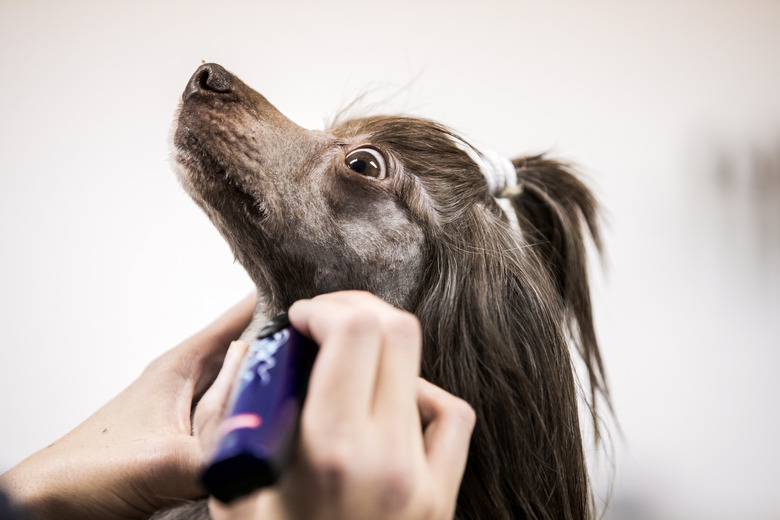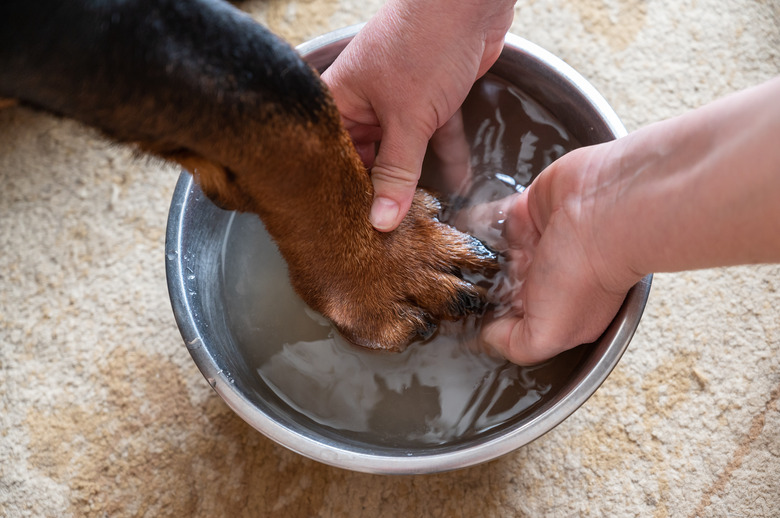How To Use Iodine On A Dog Wound
Our pets are often a just as important part of our family as our human loved ones. With our dogs our companions through thick and thin, it's natural we want to take care of them as best we can. And, as we all know, they're prone to getting cuts, scrapes, and other wounds just like humans (some even more so!)
When our furry friends do come home with cuts we need to tend to them just as we would wounds on our own skin. This article will share how to use 10% povidone iodine for dogs' wounds to properly cleanse them and avoid further infections.
Can you put alcohol on dog wounds?
Can you put alcohol on dog wounds?
You shouldn't put any type of alcohol on your dog's wounds as it can be toxic, and is actually likely to make the wound worse. The correct method of cleaning is using 10% povidone iodine for dog wounds. You do not want to use tincture of iodine because that contains alcohol. But before you use the iodine, you need to make sure you have easy access to the cut or wound.
Warning
Whenever you are working with a wounded animal, be careful. Some dogs are more likely to snip at you or bite you when they are hurt, so proceed with caution. You might want to use a muzzle and have a another person hold the pet for you while you treat the wound.
Preparing the area to be cleaned
Preparing the area to be cleaned
First you'll need to cut or shave off the hair around the area of the cut. You don't want any further chances of the cut being exposed to infection or irritation from the hairs, and you want a clear view of the wound. Gently remove all of the hair from at least half an inch around the actual cut.
After the hair has been removed from the area around the wound, run warm water over the scrape for about two minutes. Then carefully scrub the area with an antibacterial soap. Be careful not to be too forceful or hurt the dog. Remember their wound is likely to be sore.
After the initial washing, you can dab the area dry with gentle pressure from a clean gauze pad or paper towel.
Tip
Don't cover the wound up with a bandage or pad because the cut will heal faster with air exposure. Anything that is bigger than a small cut should be seen by your veterinarian before doing any home care. Sometimes, if the injury is on the foot, you will need to cover it in order to keep it clean. You can use a rolled gauze wrap in this instance. Just be careful to change the pad regularly make sure that it isn't too tight.
Using povidone iodine for dogs
Using povidone iodine for dogs
You can buy 10% povidone iodine at a drug store, and you want this kind as it lacks any alcohol that could sting your dog. It needs to be mixed with water until it's the color of iced tea, which is about 10 parts water to 1 part iodine.
Run the iodine over the wound for complete disinfection. Make sure you use enough to cover the wound, and then let it sit there. Most of it should dry on its own, but if there is any remaining, you can pat it dry.
Next steps after using iodine for dog wounds
Next steps after using iodine for dog wounds
To make sure that the cut remains free from bacteria, you will need to apply an antibiotic cream. If you use Neosporin, apply it to the area, but use it sparingly.
If your pet licks the area, you'll have to use an Elizabethan collar to keep them from doing this. If the cut is on the bottom of your dog's foot, a cream will attract dirt and debris. In this case, consult with your veterinarian about the possible need for bandaging the area.
Never apply a bandage to a paw that is still damp from cleaning. The paw needs to be thoroughly dry to reduce the chance of a skin infection developing. Bandages generally need to be changed daily. If at any point the wound appears to be getting worse, call your veterinarian. This could look like more swelling, more discharge, or your pet's appetite going down.
Dogs are prone to getting cuts and grazes, particularly if they're very active! It's easy enough for us to clean superficial wounds and use iodine on cuts, but if in doubt, always consult your veterinarian.

